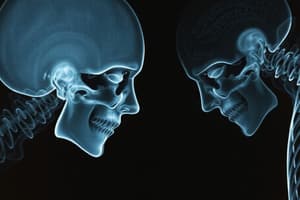Podcast
Questions and Answers
Which of the following is a constraint for amino acids in peripheral vein delivery?
Which of the following is a constraint for amino acids in peripheral vein delivery?
- Insolubility of tyrosine (correct)
- High levels of phenylalanine
- Low content of N-acetyltyrosine
- Oxidation of cysteine to cystine
What is the purpose of giving a precursor that is more soluble than tyrosine?
What is the purpose of giving a precursor that is more soluble than tyrosine?
- To prevent cysteine oxidation
- To enhance protein synthesis
- To promote nitrogen retention
- To address tyrosine insolubility (correct)
What is the percentage of nitrogen intake retained by pigglets?
What is the percentage of nitrogen intake retained by pigglets?
- 50%
- 66%
- 70% (correct)
- 101%
What is the body weight gain of young piglets fed a protein deficient diet?
What is the body weight gain of young piglets fed a protein deficient diet?
Explain the challenges associated with delivering amino acids to peripheral veins and bypassing liver metabolism. What are the constraints for amino acids in this context?
Explain the challenges associated with delivering amino acids to peripheral veins and bypassing liver metabolism. What are the constraints for amino acids in this context?
How can the challenges of tyrosine insolubility and transient hyperphenylalaninemia be addressed when designing the optimal amino acid profile for intravenous regimens?
How can the challenges of tyrosine insolubility and transient hyperphenylalaninemia be addressed when designing the optimal amino acid profile for intravenous regimens?
What is the relationship between nitrogen intake and weight gain in piglets, and what implications does this have for their diet?
What is the relationship between nitrogen intake and weight gain in piglets, and what implications does this have for their diet?
What are the potential implications of adding phenylalanine to see tyrosine specifically in piglets, and why is this approach not ideal for infants?
What are the potential implications of adding phenylalanine to see tyrosine specifically in piglets, and why is this approach not ideal for infants?
Flashcards are hidden until you start studying




